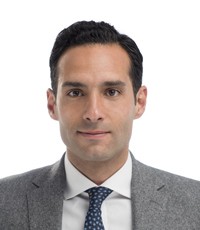DIY investors hit the headlines in a big way in early 2021 when a group of them caused several stocks (such as GameStop) to have massive volatility. However, the DIY investing trend is far more than organized individual investors making gains at the expense of hedge fund managers.
In 2020, Canadians opened over 2.3 million DIY investor accounts1, which was almost three times the number from 2019. Clearly, Canadians are increasingly getting a taste for making their own investment decisions. It’s important to understand, though, that self-directed investors often make avoidable mistakes. We take a look at the most common pitfalls awaiting DIY investors, and how to avoid them.
Potential issues for DIY investors
As with most investors, DIY investors are likely to have biases that could lead to them having risks in their portfolio that they’re unaware of. Their portfolio could also lack regular rebalancing and reviews of their investment objectives, risk tolerance, situation and goals.
There are three other areas that individual investors often fall down on and which could have serious implications for their long-term financial success:
1. A lack of fixed income allocation
Self-directed portfolios tend to lack adequate fixed income allocation. Fixed income investments are securities (often bonds) that pay a fixed amount of interest or dividend payments until they mature. The fixed income allocation of a portfolio brings stability and often helps offset equity downturns, over a longer period of time.
However, fixed income is rarely seen as sexy by investors, probably because there are few exciting stories about it, and media coverage is practically non-existent.
Young investors with a high risk tolerance (or those who won’t need to cash in their investments for many years) would typically have a pretty low fixed income allocation anyway. However, it can become a serious issue when investors get closer to retirement, their financial situation changes or if they want to revise their retirement age in any way. In these cases, having a fixed income allocation within their portfolio could be essential.
2. Awareness of all the options available
With over 10,000 mutual funds and more than 1,000 ETFs available in Canada, how can DIY investors keep on top of what’s available to them, especially if they have a full-time job and are managing their own portfolio?
Investment advisors often dedicate many hours a week to studying various funds in the market to discover the most suitable ones for their clients’ specific needs, often helped by a dedicated team of experts. Also, fixed income products are not usually geared towards DIY investors, so it can be hard for individuals to be fully aware of what’s available to help them build more robust portfolios.
One of the reasons DIY investors prefer to go at it alone is that they may feel advisors are expensive or don’t have their interests at heart. However, advisors are far more heavily regulated than online bloggers who are dishing out advice. Not only are those writers not liable for anything that may happen if you take their advice, they also don’t know anything about your situation. Relying on financial bloggers for investment advice can severely limit your options and even be potentially damaging to your portfolio.
3. Too little diversification
Diversification is not only a way to increase exposure to different sectors and geographical areas, it’s also about holding a wider range of asset classes that behave differently from each other. DIY investors can often focus too much on finding the next big thing and not realize that their portfolio is becoming heavily (and dangerously) over-concentrated. This over-concentration can have a negative impact on the growth of your portfolio over time.
As investors’ situations become more complex (and their portfolios grow), more considerations come to the fore, such as marriage, mortgages, kids’ education, retirement and inheritance planning. When the stakes are higher, the cost of investing mistakes becomes more potentially costly.
One simple solution
One simple way for investors to overcome the problems mentioned above is to consider investing in all-in-one asset allocation ETFs. These are effectively “ETFs of ETFs” and contain an extremely broad range of both fixed income and equity assets. With one single fund, DIY investors can bring immediate diversification to their portfolio with often hundreds of assets and can also add a considerable fixed income allocation. Mackenzie offers a suite of asset allocation ETFs, ranging from 100% fixed income to a mix of fixed income and equities designed to maximize growth. They won’t break the bank either: management fees start from as little as 0.17%. You can find out more about them here.
A hybrid approach can be best
I believe that a hybrid approach can be ideal for some DIY investors. Making your own investment decisions can be a great experience for people who are interested in the stock market and who have the time to research it sufficiently.
However, it’s worth remembering that advice and DIY investing don’t need to be mutually exclusive. As your life and situation become more complex, and require more precise and technical attention, it might be a good idea to eventually partner with a qualified professional whom you can trust to help you achieve your financial goals.
A study from Cirano discovered that the ratio of the wealth of DIY investors compared to advised investors is around 1:1.56 after 4–6 years of financial advice, but this leaps up to 1:2.99 after 15 years2. Effectively, investors with an advisor typically save close to three times as much money as self-directed investors, over 15 years.
And remember, if you would like to find out more about easy ways to bring greater diversification to your portfolio and exposure to more fixed income products, you can learn more here.
1 Source: Global News, February 11, 2021
2 Source: Annals of Economics and Finance, 2015


